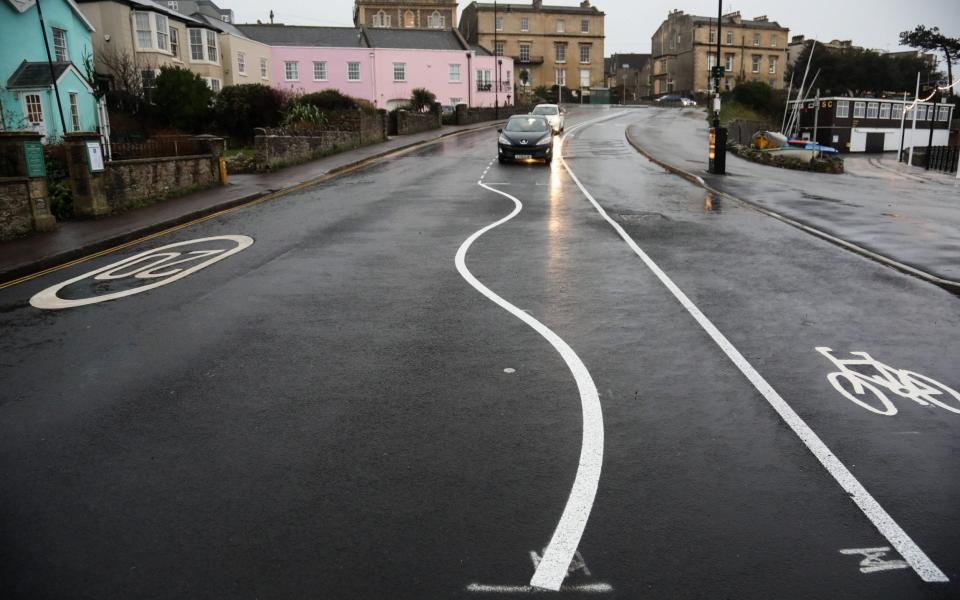Council replaces 'confusing' wiggly lines with 'yellow brick road'

Residents who hit out at a council's use of confusing “wiggly lines” on a busy road have responded angrily after the markings were replaced with bright resurfacing, likening it to a scene from the Wizard of Oz.
The council provoked ire from residents in January 2023 when it painted curvy lines along a beachfront road in Clevedon, Somerset, as part of a controversial new plan designed to slow traffic.
North Somerset Council's scheme, which included the installation of a 1,312ft segregated cycle lane along the seafront while the road was made one-way, attracted condemnation from locals.
Some residents said the designs made the historic Victorian seafront look like a children’s television programme, with one person describing the painted lines as looking like “Balamory from hell”.

The council also appeared to have begun painting the beginnings of a roundabout, dubbed an “alien landing pad” by locals.
Now the council appears to have removed the lines, replacing them with a coloured walkway along the promenade which has left residents equally aggrieved.
People said the new, buff-coloured design looks like “something out of the Wizard of Oz”, drawing comparisons with the yellow brick road.
They reported council workers removed the bendy lines and roundabout overnight on Wednesday evening and that contractors worked noisily overnight for eight hours painting new markings.
Resident Cathy Hawkins, founder of the campaign group Save Our Seafront, said the new markings were a “heartbreaking mess made of our once magnificent Victorian seafront”.

Others described the sight as an “eyesore” and suggested that period dramas would no longer be filmed in the historic area.
One resident said they had “woken up to this”, adding that with eight hours of noise it had been difficult to sleep.
“It looks horrendous,” a resident complained. Another said: “I can only assume that the white bits across the road are zebra crossings, waiting for the black lines to be painted on them. Goodness knows what the long white lines are for.”
Essex resident Linda Rodriguez said she had spent her childhood in Clevedon and visited every year. She condemned the “unnecessary ridiculous graffiti on the seafront” that had “totally ruined the amazing gem of Somerset”.
Design aims to make road feel narrower
North Somerset Council said the wiggly lines are part of a new design aimed at making the road feel narrower to slow down traffic.
The markings were added as part of plans to introduce a new beachfront cycle path along the road.
The plan is to remove traffic from the town's seafront, which features several brightly coloured homes, while the new cycleway will form part of the “Pier to Pier” link between Weston-super-Mare and Clevedon, while the road next to it will be designated one-way.
A spokesman for North Somerset Council said: “We expect many more visitors to come to Clevedon after the Pier to Pier Way opens later this year, which will bring more walkers and cyclists to the area.
“These works have made the area safer for all and also supports our commitment to provide sustainable travel routes across the area.
“The scheme has provided seven new crossing points, improved pedestrian and cycle user safety and will bring additional parking to the area. The new buff-coloured surface marks new pedestrian crossings, the space between car parking and the cycle lane as well as on the roundabout.”
The spokesman added that the material was chosen in consultation with conservation officers and was “frequently used” in historic environments across the country, such as Oxford, Bath and London.

 Yahoo News
Yahoo News 
